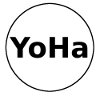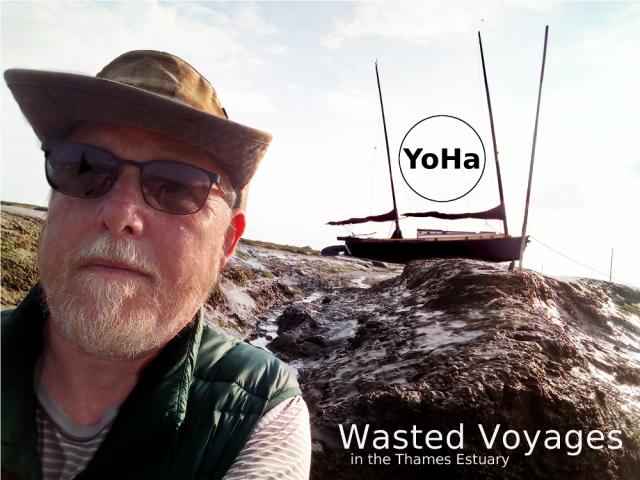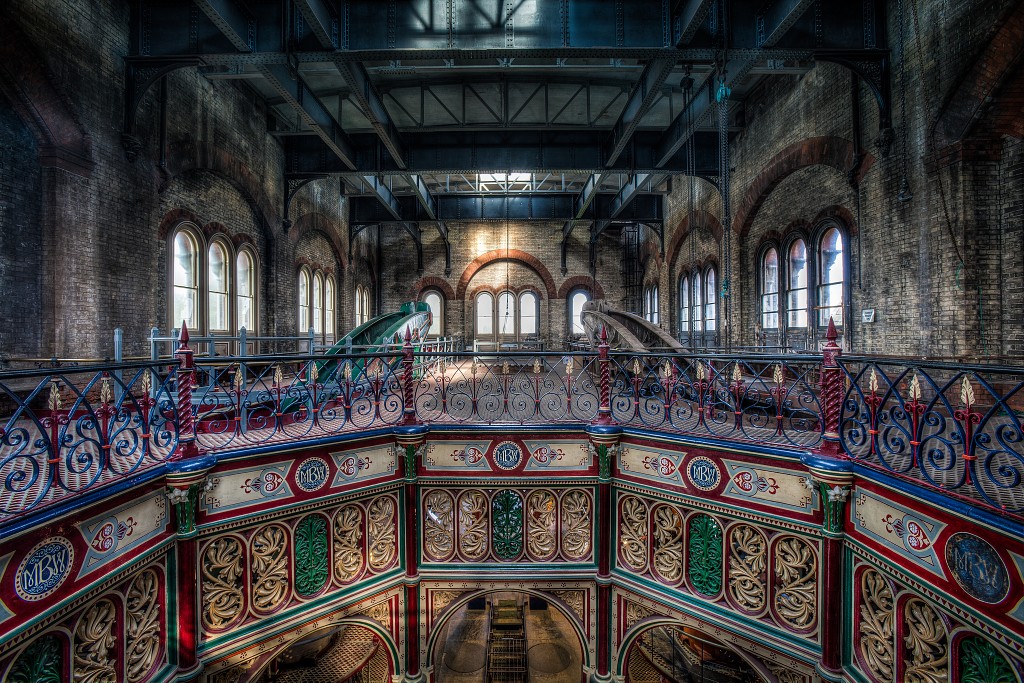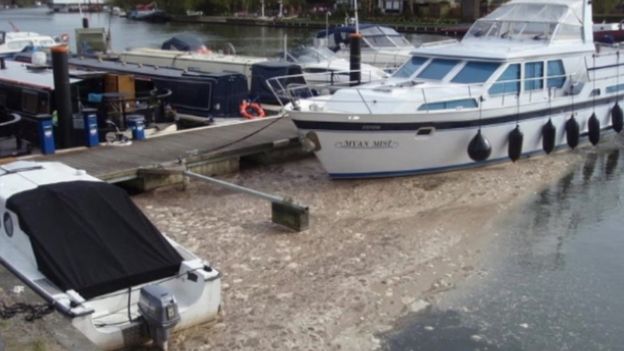
Wasted Voyages in the Thames Estuary - 2021

'Wasted' is a proposed collaboration between YoHa, local people in South Essex and Metal Culture and the Digital Culture Unit, Goldsmiths, University of London to engage in a series of critical voyages, witness seminars and public engagement events into the materiality, culture, history of waste, as it affects the more than human environment of the Thames Estuary it’s peoples and the wider public. The project is programmed for January to October 2021. Each voyage will engage in the historic and contemporary disposal of sewage and effluent, industrial and domestic rubbish, bodies, buildings and ships as it relates potentially to a series of specific public sites and organisations as follows:
Watt Tyler Park (Landfill sites at Mucking Flats and Two Tree Island, Sea Wall Leigh to East Tilbury
 img from beyondcanvey Wat Tyler Country Park – Explosives Factory https://beyondcanvey.wordpress.com/ this is a group who visit local deserted sites.
img from beyondcanvey Wat Tyler Country Park – Explosives Factory https://beyondcanvey.wordpress.com/ this is a group who visit local deserted sites.
Crossness Engines http://www.crossness.org.uk, (Princess Alice disaster, Burrows Deep, Bovril Boats)

Chatham Historic Docks, (Burnt Island and Dead Man’s island, abandoned ships)

Waste tips have become successful spaces where wildlife has flourished such as Canvey tip, Two Tree island, Mucking flats in Essex and Deadman’s and Burntwick Island in Kent. Such spaces are also haunted by the toxicity that lays just beneath the surface. Before 1994 and the introduction of the Waste Management Licensing Regulations by the UK government no records were kept of what was dumped. The only people who know what went into the ground or out to sea and under what conditions were the delivery drivers, barge masters and others who delivered, buried and dumped the waste. Most of the people who worked on the sites before 1994 are now in their 70’s 80’s and it is vital that these witnesses be listened to before the knowledge they have obtained is lost forever.
The project will hold a series of witness seminars with elders who have vital and situated knowledge of waste and the flows of the river. The seminars will be used to help create audio tracks for videos that are records of the voyages made by boat to waste sites and or to replicate the journeys that the waste travelled down the estuary. Each video will then be uploaded to popular web channels, and people asked to write feedback as well as being shown on Focal Points Gallery big screen. Once the video’s are finished they will be used to produce a series of public engagement events that will take place at each site with our partner organisations in which the witness recollections can be used to problematise waste.
Wasted Voyages Context

Coloured engraving 1828 By William Heath
For as long as humans have settled the banks the Thames it has been a repository for the disposal of waste riding on the back of 300,000 tonnes of sediment transported from its source in Gloucestershire down to the North Sea each year. Thames Water Utilities Limited processes 15 million people's wastewater which is poured back into the environment and also treats 4.4 billion litres of sewage a day which up until 1998 was dumped in the Estuary aboard Bovril Boats. (https://en.wikipedia.org/wiki/Bovril_boats)

Bovril Boat Hounslow going for another dump in the Black Deep
In this context the river can be thought of as a kind of placeless movement, the tidal flows acting as a conveyer of raw materials, food, people, biology one way and waste, decay, disease and death the other. As a contemporary example of these flows in and out of bodies and their settlements. Two-thirds of London's drinking water is supplied by the river Thames and at the same water companies discharge millions of litres of effluent and raw sewage back into the 160 km of tidal flow.

Sewage foam collected around boats in Bourne End Marina, Little Marlow
To move anything around the Estuary including waste to historic landfill sites you need to move with the tide which can run at 6knts, Tom the Watch, an ex 88 year old lighterman (one of the participants) knew this very well rowing a 100 ton barge from Battersea to Barking.
Each voyage will involve people like Tom, a person(s) with an intimate, academic or local situated knowledge of waste and the river. As the position of the Sun and Moon direct large volumes of water in and out of the estuary they create foul and friendly tides. The direction and force of the wind can either create a following sea running with the tide that can overwhelm you from behind or build a wall of water in front for the boat to jump over. The rivers tidal flows create other obstacles, ebb and flood eddies, mud flats, wrecks and dangerous shoals that are slowly learnt over a long period of time being situated at sea. (See S. A. Moore, 1894, The Thames Estuary,Norie & Wilson, London) An important part of the project is to understand how such knowledge and forces have affected the transportation of waste and our attitudes towards in the words of Mary Douglass, our dirt, it’s taboos and how they affect the more than human in the Thames Estuary.
Wildness and the landfill - many historic landfill sites in Essex and Kent have been successfully returned to a particular construction of nature, even as we acknowledge that at another scale nature never left in the first place. Somehow the chaos of an unordered nature has become identified as both disposal site and purifier of our wastefulness. The idea that through decay and rottenness of our waste we can rebirth an innocent nature, a wildness. Maybe this is derived from our cultural memory of using our own bodies fecal matter to enrich the soil from which we grow our food. Or the practice of extracting ammonia from rotten urine to clean our clothes and dwellings our become gunpowders nitrates.
Two Tree Island, Essex Wildlife Trust
Part of the purpose of the voyage is to figure the relationship between waste, nature and wildness. gong farmers, nightmen, dustman, sewage workers and refuse(d) collectors have worked in the shadows of history struggling to get rid of dirt, seamlessly removing it to where it offers to be less threatening, toxic and polluting or at least they remove it from the eyes who inhabit the idealised urban scape. Contemporary capitalisms waste can be thought of as an intentional part of the productive cycle of consumerism. (See Brookes Stevens 1968 -> planned obsolescence) Consumerism itself of course is a stand in for a system that allows individual identity to be formed and reformed by the products consumed. Waste disposal is what, invisibility makes the modern possible while banal fecal taboo's aid such a process to create a phycology that keeps waste and those who work it in the shadows. This excreting down stream so to speak, makes visible a clearing, a modern hygiene, enabling a separation of the ordered city from chaotic nature, human from their animal selves.

Metro Press Queen Mary, University of London research
Waste contemporaneously refers to something leftover, after use, worthless, defective, of no use, refused. It is often associated with a moral economy of the right, the good, the proper use, the well ordered stuff of human societies, shaped from the chaos of unregulated wildness. The governmental politics of waste offers a voluntary plastic cup tax, a doubling of the five pence to ten pence of one use shopping bags, or controls on cotton buds and plastic microbeads. This is the low hanging fruit on which consumers can signal virtue and placate complicity by paying pennies for a plastic bag to stop the ruin of a natural planet extolled by what can be figured ironically as the David Attenborough franchise. A version of nature that is both separated from, but polluted by humans. A highly aestheticised experience of a none human nature, emphasized by shots of the crew, filming the crew explaining their emotion and ethical turmoil in saving a penguin chick.
Within such a moral economy waste is rendered culturally and politically simplistic to operate as a signifier for a concerned liberal agenda that while listening to people bemoan capitalisms overproduction as it leads to global warming and mass species extinction. Waste needs to be cast into the shadows of the contemporary life capitalism offers. After a choice is made, a new purchase replacing an older choice the wasted decisions need to be forgotten, thrown away, disposed off, automatically expropriated from life by anonymous bin men, zero hour cleaners, incinerators, sewer pipes and covered barges. The invisible waste conveyor makes room for the next, choice to be made.

Arranged image from the Sun Newspaper
Local people talk about Dead Mans Island
Adam Curtis, Dead Mans Island, Medway, Kent
In this way waste can also be thought with as chaos, that which has been refuse’d in making a choice, the sawdust and wood chips that never made it into the boat. The bones left on the Medways Deadman's Island. Waste finds itself reinvented in digital form, filling up the trash cans of desktops making way for a clearer vision of purpose, a result of tidying up our thoughts on the way to becoming clear. As in this text the deletes, the wasted thoughts allow the ideas to become clearer.
“Where there is dirt their is an ordering that makes it visible.” I suppose this encapsulation of Mary Douglass thought is for me a simple indication of how waste is bound up with contemporary capitalism and is a call to arms for an engaged figuration of the ordering, what holds those bonds in place. This is not a denial or condemnation of waste but a way to articulate how it becomes overwhelming, haunting leading to species die off.
In John Scanlans book On Garbage he sites waste being used in middle English to refer to spaces that are unsuitable to sustain human habitation. Scallan goes on to explore wastes genealogy, tracing a line from the Calvinistic view that there was an inherent wastefulness to nature left unattended by men espoused by philosophers such as John Calvin (1509 - 1564) himself and John Locke(1632 - 1704).
Wasteland within this rhetoric is seen as either an inhospitable useless nature, or wasted land as a result of the lack of labour and stewardship demanded by a christian god, both create a conception of nature that has no existence beyond it’s human utility. This emphasis on (white) man's stewardship of a useful nature makes it very difficult in the present to conceive of waste outside of human values. The same notion of wasted land is implicated in colonisation, land theft and extermination of many aboriginal people around the world.
This constructed notion of wasteland, the space outside of useful nature and or labour can then be viewed as a form of heterotopia a space whose existence makes the rationalised, ordered world visible to itself. Wasteland beyond the bounds of such an ordered nature can also become a space of experimentation, a place for what Mark Fisher would term the weird and eerie. An untamed desolate wilderness, a playground for the imagination and politics bordering on the fringes of death and decay. Just the kinds of places, spaces and flows encountered in my trips in the Thames Estuary, its marshes and mudflats.
At another scale, waste is in a complex and nuanced relationship with decay, disease and death, dualities of renewal, hygiene and birth.
Somewhere between John Scanlans On Garbage and the BBC documentaries The secret Life of Rubbish I have had the realisation that I’m numbed, thoughtless, made impotent by the abundance of rubbish I produce yet do not see until a blocked toilet overflows, or a dustman strike like that of 1979, reveals the other side of my choices. Recently I discovered that everything I have ever thrown away in my 58 years is still sitting in a landfill somewhere. When I was eight or nine I had a pair of polly cotton pajamas with pictures of ducks on, I wonder in this voyage whether they can be rediscovered hanging half in and half out of the sea wall at East Tilbury. This paralysis allows me to witness the waste flowing down ebb tides toward the world's oceans. To become haunted by the flood tide returning with it’s spectre of releasing toxicity, sea level rise and associated fear of ourselves, our species and the planets mortality.
Yet nothing can be produced that does not create waste - after all at a banal level, shit is residue of life itself and it is fecal taboos enculture us to other formations of waste. Life and progress implies waste, modernity demands us to shrug off the old, yesterdays less than perfect technology to birth ever new products, Inbuilt with obsolescence that allow us to reconvene our individuality again and again by what we consume.
Allied to this consumption, are the jobs produced by my constant individuation played out through online orders. Decaying food eats into profits and carries with it a moral spectre against gluttony. Shit ,decay, waste has its associated spectre of infection and disease. Hygiene modernity's bulwark demands plastic covered cucumbers, vacuum packed meats, complex networks of drains and sewers to take away the waste of the digested contents of the weekly shop.
 bnr#33 => Tantalum Memorial, Manifesta7, Alumix, Bolzano, Italy.
bnr#33 => Tantalum Memorial, Manifesta7, Alumix, Bolzano, Italy. 